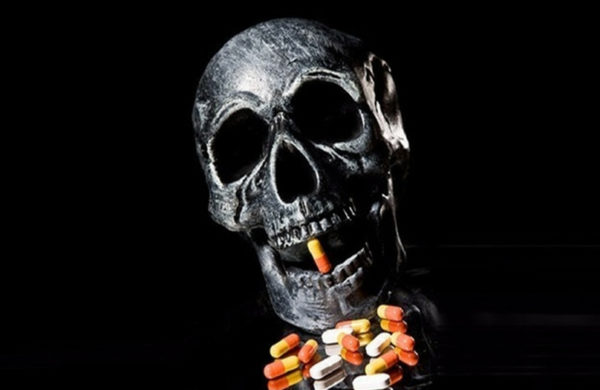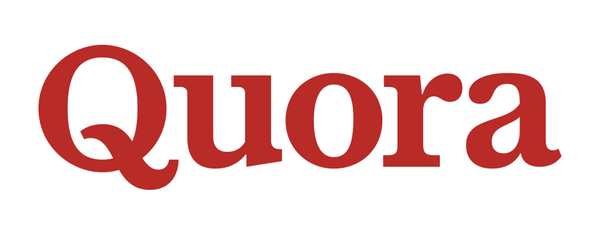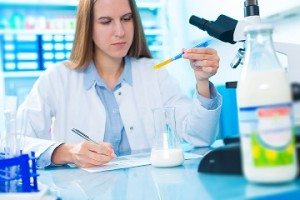When Suraj Daspattnaik, a resident of Kolkata, booked a Titan watch from a prominent e-commerce website, he wasn’t aware that a long battle was about to commence. The 28-year-old had purchased a men’s watch from the Titan Karishma collection for around Rs 2,500 from online retailer Snapdeal in June 2017. But within four months of the purchase, the watch stopped functioning. He took it to the Titan showroom, along with the guarantee card and invoice, but the shop attendant, after examining the watch, declared it to be a fake. “I wrote to Snapdeal about what the Titan showroom people told me, to which the online site responded that I would have to get the same in writing,†says Daspattnaik. He went back to the Titan showroom in Howrah and explained his predicament. The personnel at the showroom asked him to leave the watch with them, telling him they would send it to a workshop to get it verified further. “A week later, they returned the watch and confirmed orally that it was fake. But they refused to give it to me in writing, saying there was no such company policy,†says the disgruntled customer.
Daspattnaik then registered a complaint with the Consumer Online Foundation, an online consumer redressal forum, which tried intervening, but without any success. “Snapdeal refuses to refund my money without a written confirmation from Titan. On the other hand, Titan maintains that they aren’t entitled to give me anything in writing,†says Daspattnaik, a health and security officer at a construction firm in Mumbai now. “I got transferred to Mumbai and now I don’t have the time to follow up. But I intend to take my case to a consumer court,†he says.
Das pattnaik isn’t alone. In a survey conducted in April by Local Circles, a community social media platform, as many as 38% consumers polled said they received a counterfeit product at least once in the past one year. The survey, which polled over 12,000 customers across India, mentioned 17% people being unsure of whether they received any counterfeit goods, while 45% said it had never happened with them.
“The results were a surprise, as we did not expect so many people to be affected by counterfeit goods. When 38% people say they have received counterfeit goods, it is an alarming number. It shows that e-commerce platforms are not serious about tackling this problem,†says K Yatish Rajawat, chief strategy officer, LocalCircles. In the survey, around 29% people surveyed said they received a counterfeit product from one of the leading websites.
The break-up includes Snapdeal (12%), followed by Amazon (11%) and Flipkart (6%). “When more than one-third of consumers are getting fake products, it means it’s a major problem. Our survey shows that big marketplaces are not ‘safe havens’,†adds Rajawat.
Rampant issue
From branded footwear, apparel and personal care products to watches, fragrances and alcohol, fakes exist in almost all categories. With the number of people shopping on online platforms on the rise, consumers are more and more exposed to fake goods. Besides convenience, e-commerce sites offer consumers a wide choice, as well as discounted prices, from the comfort of their homes. As per market research firm RedSeer Consulting, India’s online shopping industry is estimated to grow at 60% to about $28.5 billion in terms of gross merchandise value (GMV) in 2018. But the ugly world of fakes is a big menace to this industry too. In December 2017, American footwear brand Skechers filed a case against Flipkart, and four sellers on its platform, for fake goods being sold under its label. The company, with orders from the Delhi High Court, raided seven warehouses in Delhi and Ahmedabad to recover fakes from several sellers.
In response, Flipkart has now filed a police complaint against one of its major suppliers and an employee for cheating, fraud, forgery and breach of trust. “As a responsible online marketplace, Flipkart has a robust system of checks to ensure that any instances of fake or spurious products are detected quickly and delisted,†says a Flipkart spokesperson. The complaint was filed last month after Flipkart conducted a third-party forensic audit, which revealed that the supplier, along with the Flipkart employee (designated to liaise with the supplier), was importing sub-standard products. Fake goods being sold online in India isn’t anything new however. There have been several stray incidents that have been reported against big online marketplaces over the years. In 2015, popular eyewear brand Ray-Ban took ShopClues to the Delhi High Court over complaints that it was selling fake products under its brand name. The same year, L’Oréal and Tommy Hilfiger, too, initiated action against ShopClues.
Over the years, though, these instances have only increased. So what makes online portals succumb to fakes? “Due diligence of suppliers has taken a backseat, meaning that counterfeit (products) and infringing goods have become increasingly common,†says Arun Agarwal, vice-president, Authentication Solution Providers’ Association (ASPA), a Delhi-based not-for-profit body that represents the authentication solutions industry. Agarwal explains that most e-retailers, including Amazon, Flipkart, Snapdeal and Jabong, use a marketplace business model, with suppliers storing goods on the e-retailer’s behalf and delivering them once orders have been placed, so as not to fall under the B2C category. “This model depends on e-retailers expanding their supplier base in order to provide goods at competitive prices. But the challenge is to ensure that the product shipped from an e-commerce authorised vendor to the end customer is genuine and reaches without any tampering and repackaging,†he adds.
Battle for e-tailers
For e-commerce portals, the battle against fake products is even bigger. Most have ‘zero tolerance’ for counterfeit products. Amazon India maintains that it removes suspected counterfeit items as soon as the company becomes aware of them. “We suspend or block bad actors suspected of engaging in illegal behaviour or infringing others’ intellectual property rights (IPR). We have taken independent legal action against bad actors and will continue to do so,†says an Amazon India spokesperson. But the company did not divulge any details on how many sellers have been barred from the marketplace over fake goods in the past years or how many consumers have gotten refunds for such goods. “To preserve customer trust, we are investing heavily in protecting the integrity of the Amazon marketplace for consumers, sellers and manufacturers. We are also working closely with rights owners to strengthen protection for their brands on Amazon,†adds the spokesperson.
As per a report by RedSeer in April, the Indian e-commerce industry lost $3.4 billion in GMV due to product returns in 2017. As per Snapdeal, the problem of unscrupulous sellers attempting the sale of fake products is a generic one that impacts buyers, brands and marketplaces all over the world. Experts maintain that what should be worrisome is the increasing number of people falling prey to fakes, leading to trust deficit for online sites. “By 2020, over two billion e-shoppers—60% of the target global population—will be transacting 13.5% of their overall retail consumption online, equivalent to $3.4 trillion. So the biggest challenge today for e-commerce is trust. According to Edelman’s 2015 Trust Barometer report, trust in business and other institutions is at an all-time low,†says Agarwal of ASPA.
Rajat Chetia would agree. The 27-year-old from Sivasagar in Assam swore never to return to online sites for shopping after a bitter experience in February this year—he received duplicate Amway Nutrilite supplements from Snapdeal. “Since I had been using the product for a few months, I could spot the difference in packaging and realised it was fake. I sent a mail to Snapdeal and they asked me to send proof. I clicked pictures of the original box and the fake one, and sent them to the e-tailer. After a month or two, I was refunded the complete amount of `1,422 by Snapdeal,†says Chetia, who runs an automobile business in Sivasagar. “But what if I was a first-time user? Or someone who didn’t know how to pursue the case in a consumer forum?†he says. Most online portals might seek refuge in the fact that they are a marketplace, which acts as an intermediary, connecting buyers and independent third-party sellers.
But with brands threatening to pull out, and many having already done so, e-commerce giants are now working towards weeding out counterfeiters. In the past three years, Snapdeal has delisted/restricted 45,319 sellers from accessing the platform for non-compliance with the company’s terms of use. “Every seller listed with us is required to enter into a legal agreement to sell only new and genuine items. Sellers of a branded product are required to submit a brand invoice or a brand authorisation letter before they are allowed to list products on the marketplace. A seller found indulging in any malpractice is investigated and strict action is taken, which may include, amongst other measures, permanently barring the seller from using the platform. In the case of an IPR infringement, we take down the listing and support the brand by providing seller information to enable the brand to pursue legal remedies. Snapdeal acts against verifiable and actionable complaints, as per the applicable laws of the marketplace,†says a Snapdeal spokesperson.
The company maintains that it protects the interests of the buyer through the ‘Trust Pay’ policy, wherein buyers can return the product and get 100% refund in case they are dissatisfied with it. “Besides the image-recognition system that helps identify apparent violations, we are in the process of developing and deploying additional AI-based tools, which will help analyse and correlate product, price and image-related information to flag suspicious listings for further analysis,†the spokesperson adds. India is not the only country that faces the problem of fake goods in online retail. Top retailers such as Alibaba and eBay have also struggled to weed out counterfeits. Alibaba had, in fact, fired several of its employees in 2011 when it discovered that they had granted special status to more than 2,000 sellers who had cheated customers. “The survey by LocalCircles revealed that more than 50% customers don’t trust product reviews on e-commerce sites. A majority of them even said e-tailers don’t publish negative product reviews at all times. So all the stakeholders must take collective responsibility,†says Agarwal of ASPA.
Need to get tough
Consumer activists maintain that it’s time that stringent laws are put into practice. “The penalty and liability for selling fakes should not just be on the seller, but also on the marketplace,†says Bejon Mishra, an international consumer policy expert, founder of the Consumer Online Foundation and author of the Jago Grahak Jago consumer awareness programme. “Currently, what we have in place are laws for when you are cheated. But what about telling these marketplaces to follow good practices and put in stringent norms that registered sellers have to follow?†says Mishra. Brands, too, can’t shy away from taking the onus. Queries sent from Financial Express to many brands went unanswered. L’Oréal India legal director PL Mishra told FE: “We work closely with law enforcement agencies to take legal action against counterfeiters. Also, we have registered our brands as right holders under IPR rules 2007, as a result of which we are able to block fakes at the customs end itself.â€
Rajawat of LocalCircles warns: “Brands need to realise that fakes sold online will have a major impact on their reputation. If consumers experience counterfeit (products), they will not be potential consumers in the future. And the growth for these brands will taper of. It is very important for the brand to take action and prevent counterfeit products from being sold online.†If we talk about the West, there are stringent laws in place there. “In the US, cheating with fake goods can lead to sellers and retail giants being sued for millions, besides having their licences cancelled. But in India, we have neither an aware consumer nor stringent laws,†Mishra laments.
Measures to tackle the menace, however, are underway. E-commerce platforms selling consumer products will be held liable for unfair trade practices under the new Consumer Protection Bill, 2018, which was introduced in Parliament in January this year. “It provides for the establishment of an executive agency to be known as the Central Consumer Protection Authority, which will deal with unfair trade practices and misleading advertisements,†says Agarwal of ASPA. There will, however, always be some loopholes in laws. And with counterfeiters becoming smarter by the day, it’s a problem that needs to be looked into more seriously. “The key is to be ahead of them. The biggest loophole is awareness amongst consumers towards the importance of the issue. The more they are aware, the more they will be vigilant before buying any product,†sums up Agarwal.
Get live Stock Prices from BSE and NSE and latest NAV, portfolio of Mutual Funds, calculate your tax by Income Tax Calculator, know market’s Top Gainers, Top Losers & Best Equity Funds. Like us on Facebook and follow us on Twitter.
https://www-financialexpress-com.cdn.ampproject.org/c/s/www.financialexpress.com/industry/can-i-fake-your-order/1165093/lite/





